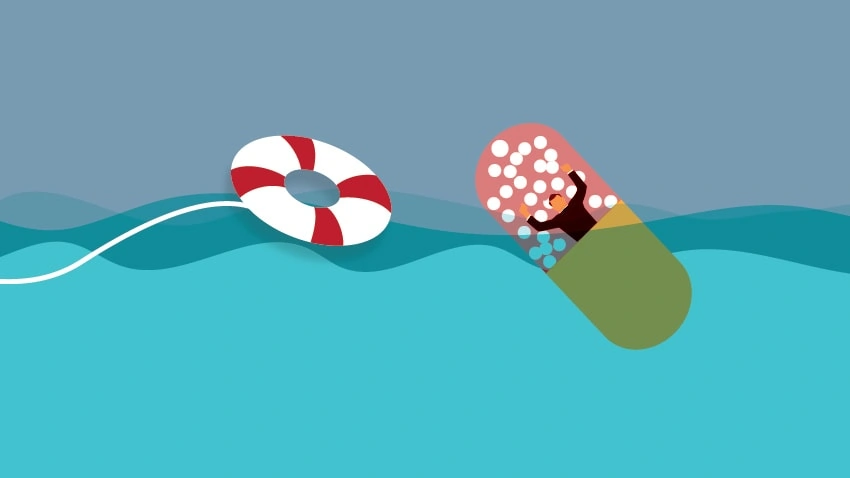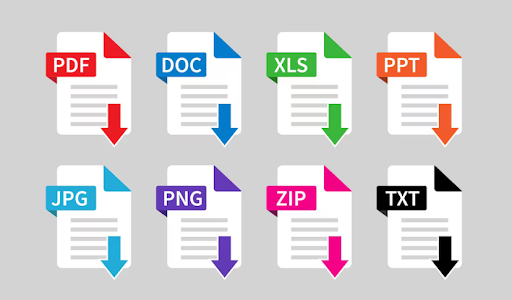For people who have an opioid use disorder (OUD), Suboxone is used for treating withdrawal and preventing a relapse. The makers of the MOUD (medication for opioid use disorder) combine two medicines, naloxone, and buprenorphine, into the formula. The brand-name medicine relieves OUD withdrawal systems and prevents opioid cravings, reducing the risk of overdosing or a relapse.
While naloxone prevents abuse of the treatment medication, buprenorphine acts as a partial opioid. The drug reduces cravings but does not make the patient high. Instead, it produces a ceiling effect. Therefore, the patient does not experience the euphoria of a more potent opioid, such as oxycodone or heroin.
Naloxone, also called Narcan, represents an opioid antagonist in Suboxone. An antagonist bars opioids in the brain, so Suboxone’s use as a MOUD helps treat a chronic OUD addiction.
However, some patients get addicted to Suboxone, as they combine the drug with other drugs, such as barbiturates or alcohol. When this happens, the patient is going outside the parameters set for using the drug as a treatment for easing an OUD withdrawal.
How Suboxone Users Become Physically Dependent
If a Suboxone user takes the drug for a long time, they may become physically dependent. A problem can develop if they continue to take the medication outside of its prescribed limits by using it with other drugs and alcohol.
Because of the opioid buprenorphine in the drug, Suboxone does have the potential for abuse. However, because it is considered a partial opioid agonist, it does not elicit the same profound high as more commonly used opioids, such as oxycodone or heroin.
Suboxone Addiction Treatment: Side Effects
People considering Suboxone addiction treatment often wonder about the side effects they’ll experience in a detox program. Most of the side effects are the same as those of OUD withdrawal and are flu-like. The patient may experience nausea, fatigue, sleeplessness, heavy perspiration, headache, and digestive cramping.
If the patient’s treatment is not clinically supervised, they may experience more intense symptoms or a precipitated withdrawal. That is why you must have medical intervention when following a timeline for withdrawal from an opioid medication or sedative medicines.
The symptoms associated with a Suboxone withdrawal must be based on specific factors, such as the patient’s current health and medical history, whether they combine Suboxone with other drugs (such as sedatives) or use it with alcohol.
How Detox Works for Suboxone Patients
Medical professionals can effectively oversee treatment for a Suboxone addiction by establishing a tapering off schedule of withdrawal, reducing dosing until the patient no longer feels dependent on the medicine. The detox is adjusted to prevent complications if the patient also has other addictions.
The detox program is combined with counseling, so the patient receives a complete schedule of treatment – one that addresses both their physiological and psychological requirements.
For the duration of their withdrawal, nurses and doctors closely track a patient’s progress in a safe and comfortable setting. While detoxing, medical professionals may use specific treatment medications to lessen the impact of additional symptoms that may emerge.
Outpatient Treatment Programs
Patients who have completed Suboxone detox typically progress to an outpatient treatment program. Therefore, they can continue to receive treatment while living at home. This added feature helps people overcome their addictions who take care of a family.
Other Key Benefits of Recovery
One of the “perks” of getting addiction treatment is counseling. While some patients show some skepticism about the therapy, research proves otherwise. That is why counseling often supports detox in addiction treatment programs.
Behavioral health therapies allow patients to check the triggers that cause them to self-medicate, so they don’t take this approach to solve problems or relieve feelings of stress or anxiety.
While detox may be used to reduce the physical presence of an addiction, behavioral therapies, such as Cognitive Behavioral Therapy (CBT), allow a patient to explore the reason for their addiction. When you unearth why you take drugs, you will find other ways to cope with personal problems or work-related issues.
Therefore, counseling gives you the information and tools you need to face specific challenges as you journey through the recovery process. If you can change the thinking that leads to addictive behavior, you can change the behavior. Combining counseling with detox in an addiction treatment plan is the whole idea.
It also helps to have the support of a counselor – someone who will hold you accountable for your actions and back you in your recovery goals and success. That is why you don’t need to feel despair about enrolling in a treatment plan. What you discover will be life-changing and give you a whole new perspective on life.
If you cannot stay away from using Suboxone or your life has turned into one irritation after the next, you need to take a detour down the road to recovery. Troubles with focusing, feelings of depression, and physical dependence on drugs make addiction treatment not something to contemplate. It is something you need to do.
Do You or a Loved One Have a Suboxone Addiction?
If you are using Suboxone outside the prescribed boundaries or using a drug without a prescription, you need to seek treatment.
Is the use of the drug affecting your relationships, or has its use caused you to give up hobbies or leisure activities? If so, you must enroll in a treatment program.
Taking drugs illicitly can lead to reckless thoughts and behaviors and worsening physical conditions.
If you have developed a high tolerance to Suboxone, sudden discontinuing its use is dangerous. Make it your goal to join a recovery program right away. If your focus is using the drug, you need medical and behavioral support now – not later.
A Few Final Thoughts
Drugs, such as Suboxone, can cause irreversible health problems and events. That is why you need to change and learn more about addiction treatment. Don’t get caught in the web of an addiction. Straighten your life out by opting for recovery.
For people who have an opioid use disorder (OUD), Suboxone is used for treating withdrawal and preventing a relapse. The makers of the MOUD (medication for opioid use disorder) combine two medicines, naloxone, and buprenorphine, into the formula. The brand-name medicine relieves OUD withdrawal systems and prevents opioid cravings, reducing the risk of overdosing or a relapse.
While naloxone prevents abuse of the treatment medication, buprenorphine acts as a partial opioid. The drug reduces cravings but does not make the patient high. Instead, it produces a ceiling effect. Therefore, the patient does not experience the euphoria of a more potent opioid, such as oxycodone or heroin.
Naloxone, also called Narcan, represents an opioid antagonist in Suboxone. An antagonist bars opioids in the brain, so Suboxone’s use as a MOUD helps treat a chronic OUD addiction.
However, some patients get addicted to Suboxone, as they combine the drug with other drugs, such as barbiturates or alcohol. When this happens, the patient is going outside the parameters set for using the drug as a treatment for easing an OUD withdrawal.
How Suboxone Users Become Physically Dependent
If a Suboxone user takes the drug for a long time, they may become physically dependent. A problem can develop if they continue to take the medication outside of its prescribed limits by using it with other drugs and alcohol.
Because of the opioid buprenorphine in the drug, Suboxone does have the potential for abuse. However, because it is considered a partial opioid agonist, it does not elicit the same profound high as more commonly used opioids, such as oxycodone or heroin.
Suboxone Addiction Treatment: Side Effects
People considering Suboxone addiction treatment often wonder about the side effects they’ll experience in a detox program. Most of the side effects are the same as those of OUD withdrawal and are flu-like. The patient may experience nausea, fatigue, sleeplessness, heavy perspiration, headache, and digestive cramping.
If the patient’s treatment is not clinically supervised, they may experience more intense symptoms or a precipitated withdrawal. That is why you must have medical intervention when following a timeline for withdrawal from an opioid medication or sedative medicines.
The symptoms associated with a Suboxone withdrawal must be based on specific factors, such as the patient’s current health and medical history, whether they combine Suboxone with other drugs (such as sedatives) or use it with alcohol.
How Detox Works for Suboxone Patients
Medical professionals can effectively oversee treatment for a Suboxone addiction by establishing a tapering off schedule of withdrawal, reducing dosing until the patient no longer feels dependent on the medicine. The detox is adjusted to prevent complications if the patient also has other addictions.
The detox program is combined with counseling, so the patient receives a complete schedule of treatment – one that addresses both their physiological and psychological requirements.
For the duration of their withdrawal, nurses and doctors closely track a patient’s progress in a safe and comfortable setting. While detoxing, medical professionals may use specific treatment medications to lessen the impact of additional symptoms that may emerge.
Outpatient Treatment Programs
Patients who have completed Suboxone detox typically progress to an outpatient treatment program. Therefore, they can continue to receive treatment while living at home. This added feature helps people overcome their addictions who take care of a family.
Other Key Benefits of Recovery
One of the “perks” of getting addiction treatment is counseling. While some patients show some skepticism about the therapy, research proves otherwise. That is why counseling often supports detox in addiction treatment programs.
Behavioral health therapies allow patients to check the triggers that cause them to self-medicate, so they don’t take this approach to solve problems or relieve feelings of stress or anxiety.
While detox may be used to reduce the physical presence of an addiction, behavioral therapies, such as Cognitive Behavioral Therapy (CBT), allow a patient to explore the reason for their addiction. When you unearth why you take drugs, you will find other ways to cope with personal problems or work-related issues.
Therefore, counseling gives you the information and tools you need to face specific challenges as you journey through the recovery process. If you can change the thinking that leads to addictive behavior, you can change the behavior. Combining counseling with detox in an addiction treatment plan is the whole idea.
It also helps to have the support of a counselor – someone who will hold you accountable for your actions and back you in your recovery goals and success. That is why you don’t need to feel despair about enrolling in a treatment plan. What you discover will be life-changing and give you a whole new perspective on life.
If you cannot stay away from using Suboxone or your life has turned into one irritation after the next, you need to take a detour down the road to recovery. Troubles with focusing, feelings of depression, and physical dependence on drugs make addiction treatment not something to contemplate. It is something you need to do.
Do You or a Loved One Have a Suboxone Addiction?
If you are using Suboxone outside the prescribed boundaries or using a drug without a prescription, you need to seek treatment.
Is the use of the drug affecting your relationships, or has its use caused you to give up hobbies or leisure activities? If so, you must enroll in a treatment program.
Taking drugs illicitly can lead to reckless thoughts and behaviors and worsening physical conditions.
If you have developed a high tolerance to Suboxone, sudden discontinuing its use is dangerous. Make it your goal to join a recovery program right away. If your focus is using the drug, you need medical and behavioral support now – not later.
A Few Final Thoughts
Drugs, such as Suboxone, can cause irreversible health problems and events. That is why you need to change and learn more about addiction treatment. Don’t get caught in the web of an addiction. Straighten your life out by opting for recovery.








Leave a Reply
You must be logged in to post a comment.